R-32: The Most Balanced Refrigerant for Stationary Air Conditioners and Heat Pumps
Q. Why does Daikin choose R-32?
A. R-32 is the most balanced refrigerant in terms of Environmental Impact/Energy Efficiency/Safety/Cost-Effectiveness for Stationary Air Conditioners and Heat Pumps.
Daikin has assessed various refrigerants (R-32, blends, natural refrigerants, HFOs, etc.) based on four criteria (overall environmental impact, energy efficiency, safety and cost-effectiveness), and we have utilized many of these refrigerants in selected applications.
After examining its key properties, Daikin has concluded that R-32 is a better refrigerant than others for direct expansion type cooling and heating equipment including single package products. We have been launching R-32 products into the worldwide market in many regions.
Smaller Impact on Environment
R-32 has zero ODP (Ozone Depletion Potential) and its GWP (Global Warming Potential) is 675, which is lower than the GWP of currently used R-410A or R-22. It could reduce the charging volume by 30% compared to R-410A. R-32 related CO2 emissions decrease by 76% thanks to the lower GWP and the charging volume reduction.
Theoretical Modified GWP
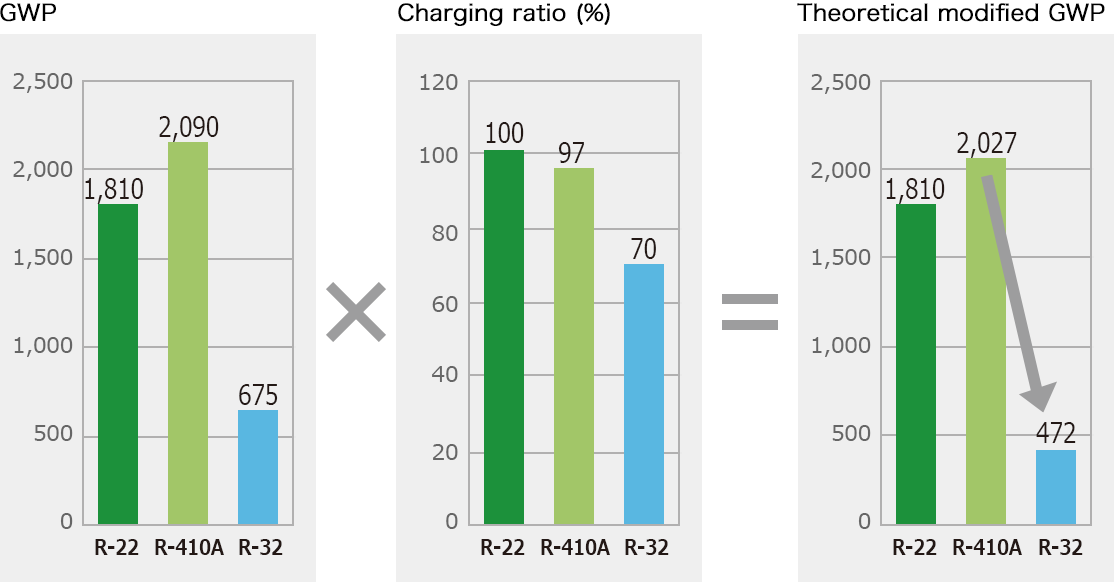
- Note:
- GWP values are based on the Fourth Assessment Report from the Intergovernmental Panel on Climate Change (IPCC 4th AR).
Energy Efficiency: High Energy Efficiency
The potential refrigerating effect of R-32 is 1.5 times that of R-22 or R-410A. The cooling seasonal performance factor (CSPF) of R-32 is higher than conventional refrigerants. Its peak power consumption is also lower, helping to alleviate power shortages in large cities during periods of high demand.
CSPF
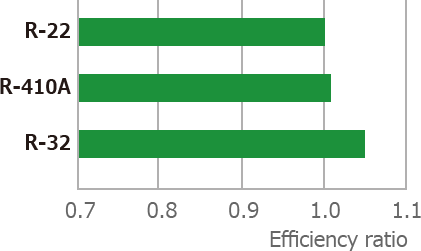
Peak Power Consumption Ratio
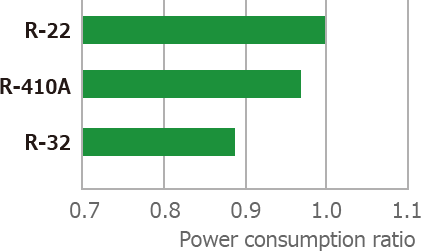
- Preconditions for calculations
- 3.5 kW split-type cooling only model
- CSPFs are calculated based on ISO 16358-1.
- The peak power consumptions are based on indoor/outdoor temperatures of 27/35°CDB.
- Comparison among India, Indonesia and Malaysia.
- *
- Based on Daikin's calculation
Safety: Flammability
International Standard ISO 817:2014 segregates the flammability of refrigerants into 4 categories as follows: Class 1 (No flame propagation), Class 2L (Lower flammability), Class 2 (Flammable) and Class 3 (Higher flammability). Class 2L refrigerants present the lowest risk of the 3 flammable categories and are defined by having a burning velocity of less than 10 cm per second. The characteristic of this low burning velocity is that the flame front does not propagate readily in a horizontal direction. This is because the convection rise due to combustion creates a higher velocity than the burning velocity. This effectively means that a Class 2L refrigerant is not explosive if ignited because the flame only propagates in an upwards direction from the ignition point and not rapidly outwards in all directions. We have done actual as well as theoretical risk assessments using refrigerant in equipment to confirm safety.
ISO 817:2014 Safety Group Classification
| Flammability | Low Toxicity A | High Toxicity B | |||
|---|---|---|---|---|---|
| Class 3 | Higher flammability | A3 | Propane, Isobutane, Others | B3 | n/a |
| Class 2 | Flammable | A2 | R-152a | B2 | R-40, R-611 |
| Class 2L | Lower flammability | A2L | R-32(675), R-1234yf(4), R-1234ze(E)(6), Others | B2L | Ammonia |
| Class 1 | No flame propagation | A1 | R-410A(2090), R-134a(1430), R-407C(1770), Others | B1 | R-123, R-245fa |
A2L and B2L are lower flammability refrigerants with a maximum burning velocity ≤ 10 cm/s (3.9 in./s)
GWP value is indicated in parenthesis based on IPCC 4th AR.
Relationship between Burning Velocity and GWP
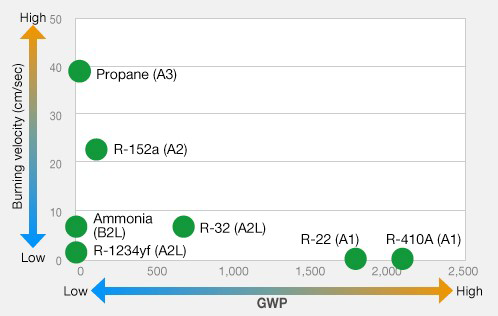
Safety Group Classification is indicated in parentheses.
Source: Japan Refrigeration and Air Conditioning Industry Association (JRAIA)
Risk Assessment of Mildly Flammable Refrigerants 2013 Progress Report, April 2014, The Japan Society of Refrigerating and Air Conditioning Engineers
Behavior of Flames
| Classification | Class 3 | Class 2 | Class 2L | |
|---|---|---|---|---|
| A3 | A2 | A2L | B2L | |
| Substance | Propane | R-152a | R-32 | Ammonia |
| GWP | 3 | 124 | 675 | 0 |
| Burning velocity | 39 cm/sec | 23 cm/sec | 6.7 cm/sec | 7.2 cm/sec |
| Heat of combustion | 46 MJ/kg | 16 MJ/kg | 9 MJ/kg | 19 MJ/kg |
| Combustion state | 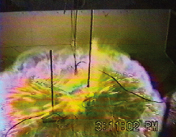 |
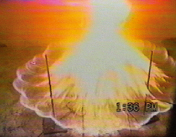 |
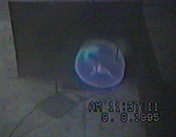 |
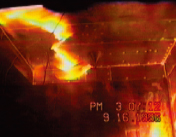 |
2L refrigerants do not horizontally propagate due to their slow burning velocity. Additionally, heat of the combustion of R-32 is low and the range of any impact by its flame is limited.
Note: GWP values are based on the Fourth Assessment Report from the Intergovernmental Panel on Climate Change (IPCC 4th AR).
Q. Is R-32 popular in the world?
A. Approximately 370 million units of R-32 air conditioners are on the market in the world,*1 achieving the reduction of approximately 590 million tons of CO2.*2
Daikin was the first to introduce air-conditioning and heat pump technology utilizing the refrigerant R-32, starting in Japan in November 2012. As of March 2025, we have sold approximately 58 million units globally. Together with other manufactures, approximately 370 million units of R-32 equipment are estimated to have been sold globally*1. If all presently used R-410A refrigerant were replaced by R-32, the total CO2 equivalent impact of HFCs could be reduced by up to approximately 800 million tons-CO2 compared to business as usual scenarios, along with a significantly reduced amount of indirect CO2 emissions due to lower energy consumption. This is the equivalent of 50% of the annual carbon absorption provided by the Amazon rain forest. We will continue to challenge ourselves in the technical development of R-32 technology, and contribute to standard making to expand range of our products using R-32.
R-32 Dissemination in the World
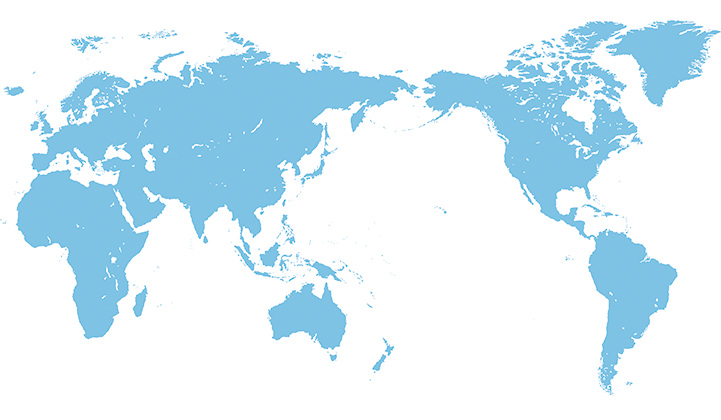
Over 370 million air conditioners sold worldwide*1
(including the products other than Daikin)
- *1
- Daikin's estimation as of March 2025.
- *2
- Comparison to business as usual scenarios with currently used R-410A and R-22.
See more information of basic patent for equipment using R-32 (September 10, 2015) (99KB)
See more information of R-32 Patent Non-Assertion Pledge (July 1, 2019) (104KB)






